
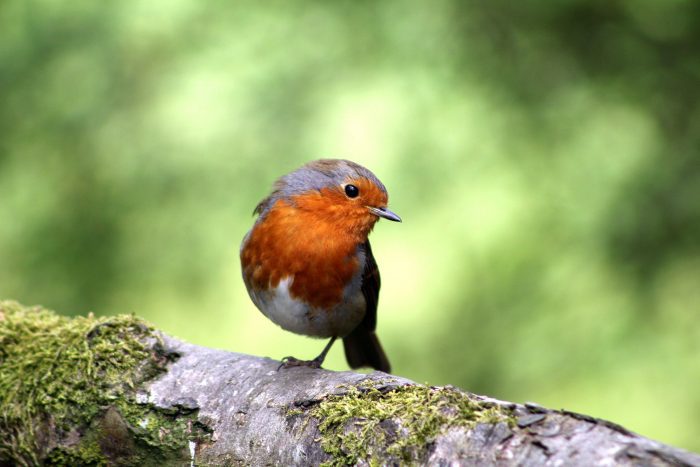
Robin. Credit: bluebudgie via Pixabay
The Centre is visited by a range of birds who enjoy the bird food provided for them at the bird tables and feeders around the site. Listen out for the different bird song and keep watch for our resident robins.
Robins are territorial birds and will be found in the same location.
The male’s red breast grows larger as the robin matures and is a visual indicator of the bird’s survival skills. A robin with a larger red breast will be more attractive to a potential mate and will also appear more intimidating to a rival after its territory.
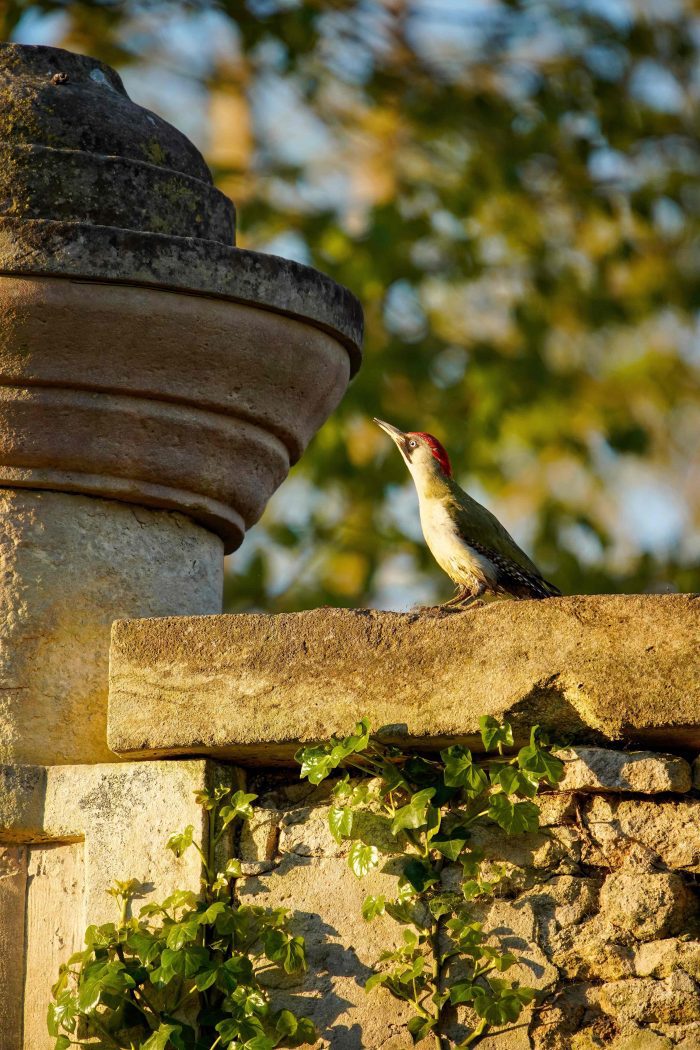
Green Woodpecker. Credit: apnear40 via Pixabay
The green woodpecker is the largest of the UK’s woodpeckers. It is olive-green with a red crown on the head. It has a yellow rump and is black around the face. In males, the moustache area is red and in females it is black.
Although they tend to pair for life they spend most of the year alone. Despite roosting near each other they only spend time together during the mating season.
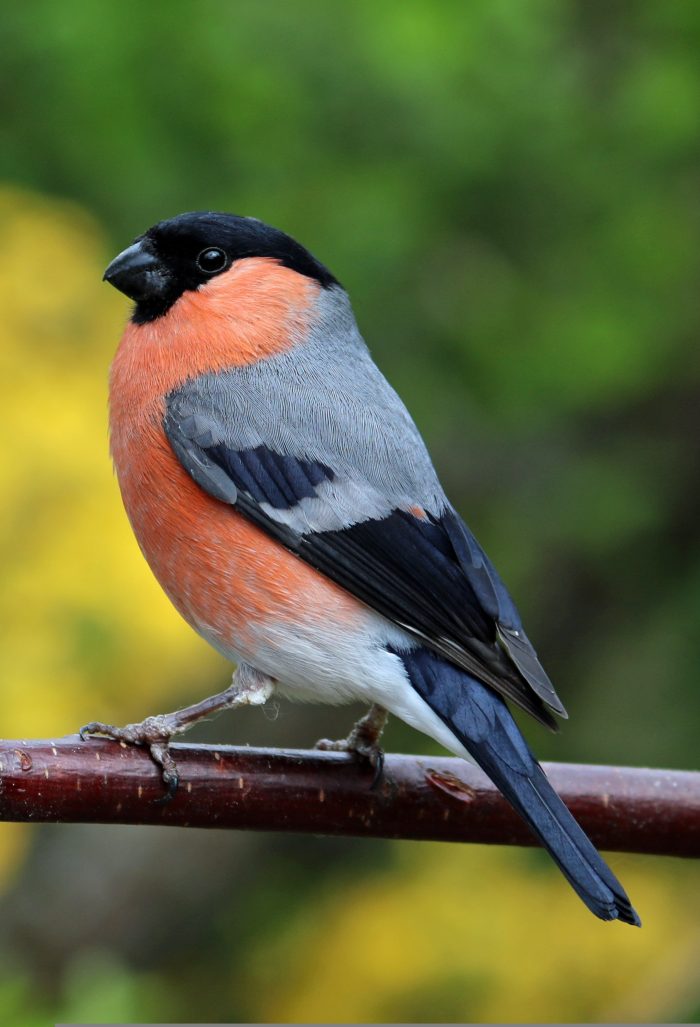
Bullfinch. Credit: jLasWilson via Pixabay
Bullfinches are plump birds that feed on buds and fruit. The bullfinch has a black cap head, stubby black bill and black tail. It has a white rump. Its back is grey and wings are black and white. Males have a pink breast and females are greyish-brown.
The Bullfinch is a shy bird and tends to sing within the cover of trees and not out in the open.
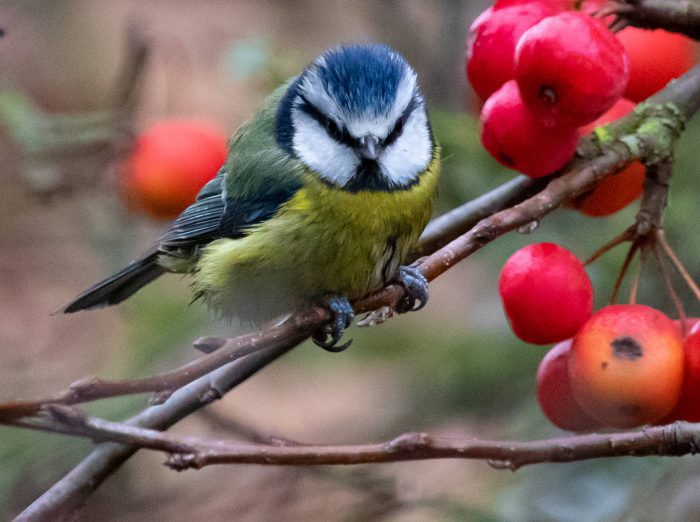
Bluetit. Credit: TheOtherKev via Pixabay
Blue Tits are active feeders that hunt for insects amongst the branches and leaves in woodlands. Blue Tits nest in holes in trees and are happy to nest in bird boxes.
These colourful birds have a blue cap, white cheeks, black eyestripes, a greeny-blue back, yellow belly, and blue wings and tail. Their blue caps glow in ultra-violet light making them easier to spot by other members of the species as their eyes can detect ultra-violet light.
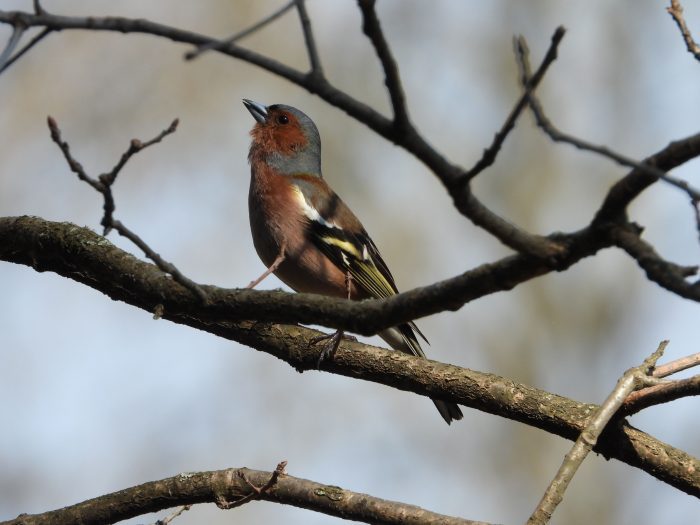
Chaffinch. Credit: satynek via Pixabay
The male chaffinch has a blue-grey crown, brown back and pink breast. Females are brown and have white shoulder patches and wing-bars.
They feed on seeds and insects and although found visiting feeders in gardens they prefer to feed from food that has fallen to the ground.
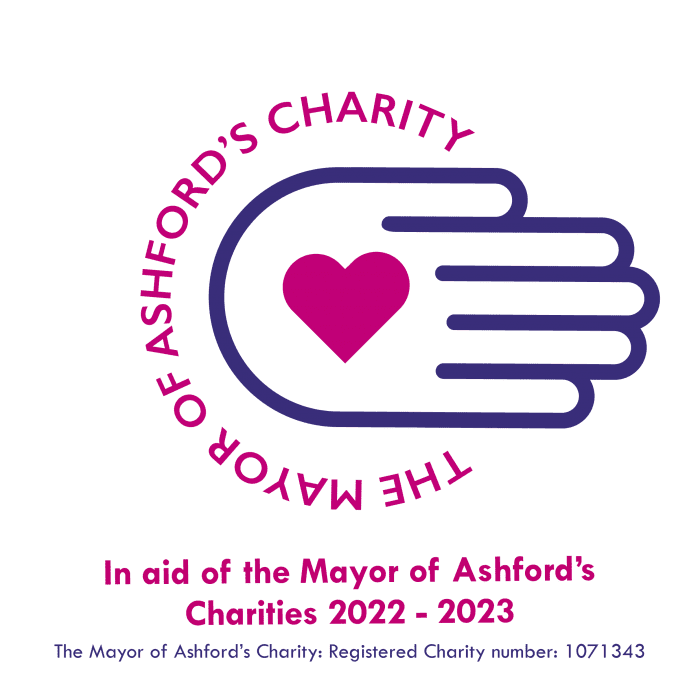
The information board is kindly sponsored by The Mayor of Ashford’s Charity and International Biodiversity Consultants Ltd
